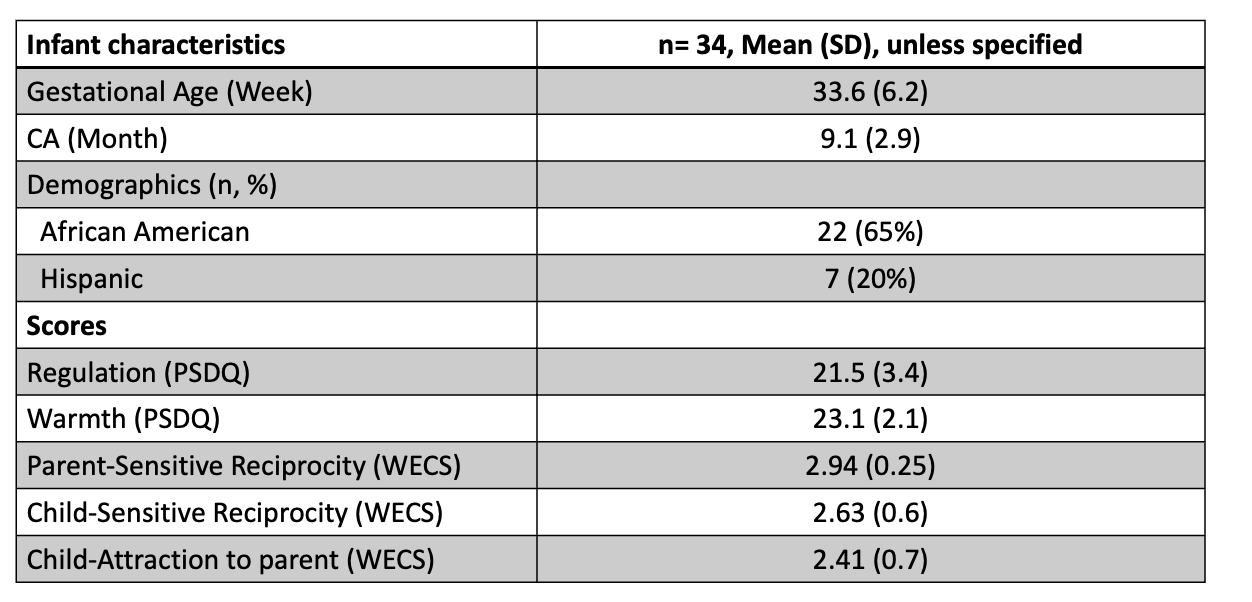Developmental and Behavioral Pediatrics
Session: Developmental and Behavioral Pediatrics 1: Parenting and Behavior
389 - Higher parental regulation/structure is associated with greater infant sensitivity & attraction to parent in infants with cerebral palsy/high risk for cerebral palsy
Friday, May 3, 2024
5:15 PM - 7:15 PM ET
Poster Number: 389
Publication Number: 389.301
Publication Number: 389.301

Mary Lauren Neel, MD, MSCI (she/her/hers)
Assistant Professor
Emory University School of Medicine
Atlanta, Georgia, United States
Presenting Author(s)
Background: Parenting characteristics, including warmth, sensitivity, and structure, are associated with improved developmental outcomes in infants with disabilities. Emotional connection (EC) is a validated psychological construct that is foundational to the parent-infant relationship. EC may mechanistically link parenting input and child development. To investigate this link, we examined parenting characteristics associated with parent-infant EC.
Objective: To characterize associations between parenting style components and parent-infant EC.
Design/Methods: Our prospective observational cohort study included infants 4-14 months corrected age (CA) with or at high-risk for cerebral palsy (CP). Participants completed two research lab visits 6 weeks apart, with a Parenting Styles and Dimensions Questionnaire (PSDQ) and a 5-minute parent-child video-recorded free play session. We coded the play session using the Welch Emotional Connection Screen (WECS) for sensitivity/reciprocity, attraction, vocal communication, and facial expressiveness in parent and child. We focused on PSDQ warmth and regulation subscales, scoring acceptance/encouragement versus reasons/explanations, respectively. We performed linear regressions adjusting for repeated measures between parenting style components on PSDQ and parent-infant EC on WECS.
Results: In total, 63 measurements were obtained from 35 dyads, 65% black, 20% Hispanic (29 dyads completed both visits). Mean gestational age of infants was 33 weeks and mean CA was 9 months (Table 1). Parents with higher PSDQ regulation scores displayed higher WECS sensitivity (coeff=0.335, p=0.010). More importantly, children of parents with higher PSDQ regulation scores also displayed higher WECS sensitivity scores (coeff=0.267, p=0.041), as well as higher WECS attraction to parent scores (coeff=0.316, p=0.015). Parental warmth on the PSDQ was not significantly correlated with any WECS scores (Figure 1).
Conclusion(s): This is the first study to examine associations between a validated parenting questionnaire and WECS coding. It adds to an emerging body of evidence suggesting the particular importance of parental regulation, akin to parental structure, for infants at high-risk of disabilities. Opportunities abound for interventions to support parental structure in infants with and at high-risk for CP.


